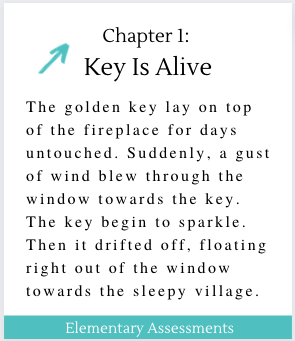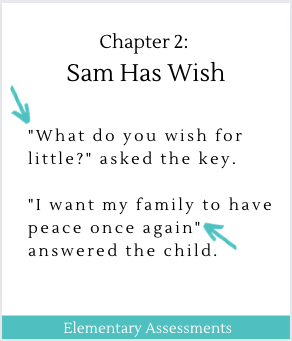Looking for a list of fiction text features? If so, you’ve landed in the right place.
Yes, fiction books do have text features.
These fiction text features include chapter headings, illustrations, quotation marks, table of contents, title, and title page.
They aid students in comprehending fiction books fully.
Following you will find explanations and examples of each type of fiction text feature.
Related: nonfiction text features
Fiction Text Features
Chapter Headings
In fiction books, chapter headings represent the title of the chapter. The title serves as a clue to the main idea of the chapter.

Pictures
Pictures in a fiction text are often drawings or illustrations. They help the reader visualize the scenes that are occurring within the pages of the book.

Quotation Marks
Quotation marks emphasize the exact words of a character in a book. The reader must note that when a new speaker talks, a new paragraph begins.

Table of Contents
Located at the beginning of a book, the table of contents outlines each section of a book.
It provides the title plus the page number on which the chapter or section can be found.

Title
The title is the main idea of the entire story or text selection. It is located at the beginning of the fiction book, on the cover or title page.

Title Page
The title page shows a book’s title, author, illustrator, and publisher. It may include an image that represents the main idea of the fiction book.

Final Thoughts: Fiction Text Features
Now you know the main fiction text features.
When students read, encourage them to identify and explain how each helps them comprehend the book better.
See a great lesson idea for exploring the differences between nonfiction and fiction text features.
